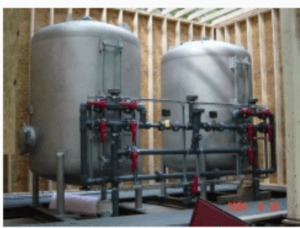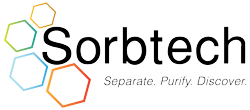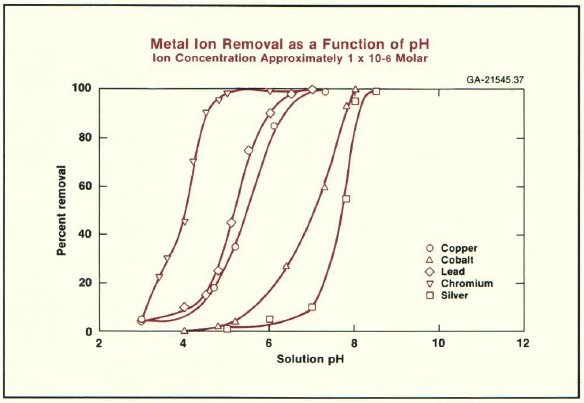Treatment of Wastewaters Containing Fertilizer Nutrients / Metal Ions
Problem
Today, wastewater is treated for pollutants by municipalities at a wastewater treatment plant. The wastewater contains nitrogen and phosphorus from human waste, food, soap and detergents. After treatment the cleaned water is typically released into a local river where it can become a source of nitrogen and phosphorus pollution. According to the U.S.E.P.A., “Some wastewater treatment plants can remove more nitrogen and phosphorus from their discharges than others depending on their equipment and how they go about it. Enhanced treatment systems enable some wastewater plants to produce discharges that contain less nitrogen than plants using conventional treatment methods. Upgrading wastewater treatment systems is often expensive for municipalities and rate payers, but upgrades can pay for themselves or end up saving a plant money. Various strategies to reduce nitrogen and phosphorus loads from wastewater treatments plants are being pursued across the country.”
Other high nitrogen and phosphorus contributors are storm water run-off, unkept septic systems, ballast water, mine sites, and hydraulic fracturing flowback waters. These require remediation actions to take place onsite where phosphate and humic acids and/or metals including arsenic, zinc, silica, coper, lead, and selenium need to be reduced.
Solution
Sorbtech’s granular activated aluminas are used as selective adsorbents for removal / recovery of metal ions, however there are several important process variables which influence their performance including pH, ionic strength, and metal ion speciation.
The aluminas can be used in point-of-entry or point-of-use treatment devices. The effectiveness depends on the contaminant, characteristics of the alumina, the device design, and water quality. Flow rate and contaminant removal capacity are also factors in determining the total capacity of an activated alumina device.
The figure above contains data from Alcoa Labs (New Kensington, PA) and shows the removal of metal ions by activated alumina as a function of pH. The data was obtained under dilute solution conditions, typically: 1 gram per liter solids and 1 micromolar metal ion concentration.
General Rules for Metal Ion Adsorption using Activated Alumina
- Anion adsorption is favored in a pH range 4 to 8; with the optimum typically being pH ~5.5.
- Cation adsorption occurs over a broader pH range than anion adsorption: 5 < pH optimum < 12.
- Oxy-anions in solution often enhance cation adsorption.
- Complex (e.g., chelate) formation dramatically affects selectivity and capacity for both cations and anions.
Predicting Metal Ion Removal Efficiency
Models which incorporate both alumina surface chemistry data and aqueous chemical equilibrium have been used to predict the activated alumina performance.
Alumina in Water Treatment – surface adsorption selectivity series
Cations
Th (II), Al(III, U(IV) > Zr(II), Ce(IV) > Fe(III), Ce(III) > Ti(III) > Hg(II) > UO2(II) > Pb(II) > Cu(II) > Ag(I) > Zn(II) . Co(II), Fe(II) > Ni(II) > Ti(I) > Mn(II)
Anions
OH- > PO43- > C2O42- > F- > SO32-, Fe(CN)64-, CrO42- > S2O32- > Fe(CN)63-, Cr2O72- > NO2-, CNS- > I- > Br- > Cl- > NO3- > MnO4- > ClO4-, CH3COO- > S2-
Some features of activated alumina systems:
- Robust adsorbent media will not deteriorate with backwash.
- Works across a broad range of water chemistries.
- Shipping containers are non-hazardous: made to transport by land, air, or sea.
- Spent adsorbent media can be landfilled (disposed as not hazardous) with appropriate post treatments.
- Small footprint makes it easier to integrate into existing water treatment facilities, like at refineries or industrial sites.
- Competitive operational costs – No moving parts on the technology. Many size options available.
- Modifiable surface chemistry allows for customization based on application – polarity, acidity/basicity, porosity, and surface area.

Image from EPA’s Office of Research and Development and Office of Water
Dual adsorbent bed systems are most desirable, whether in series or parallel. A highly adsorptive activated alumina media and chemical treatment system, combine to provide a simple, safe, and compact process. The addition of automatic controls provides minimum attendance by operations personnel.
Schedule a phone or video conference with your Account Manager to discuss in more detail.
The information contained in this data sheet is believed to be true and accurate but is presented for guidance only. Risks and liability for use of the products or application of the suggestions described are assumed by the user. Any recommendations or suggestions are made without warranty or guarantee.



